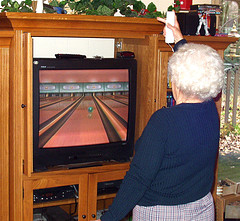New CMA Report Warns Poor Air Quality Killing Canadians
OTTAWA, August 13, 2008 – The Canadian Medical Association released staggering new data today showing that this year alone as many as 21,000 Canadians will die prematurely from the effects of air pollution. While most of those deaths will be due to chronic exposure over a number of years, almost 3,000 will be the result of acute, short-term exposure.
The CMA’s report entitled No Breathing Room: National Illness Costs of Air Pollution, shows the effects of poor air quality based on the concentrations of two highly predictive pollutants – ozone and particulate matter – on four distinct age groups of Canadians.
“With the start of the Olympics in Beijing, much has been made about the poor air quality in China and the effect it is having on our athletes,” said CMA President Dr. Brian Day. “But we have a serious home-grown pollution problem right here and Canadians, ranging from the very young to the very old, are paying the price.”
Specific findings of the No Breathing Room: National Illness Costs of Air Pollution report include:
* By 2031, almost 90,000 Canadians will have died from the acute short-term effects of air pollution. The number of deaths, due to long-term exposure, will be over 700,000 – the population of Quebec City.
* In 2008, 80% of those who die due to air pollution will be over age 65.
* In 2008, 25 Canadians under age 19 will die of the effects of short-term exposure to air pollution.
* Ontario and Quebec residents are the worst hit Canadians, with 70% of the premature deaths occurring in Central Canada, even though these two provinces comprise only 62% of Canada’s population.
* In 2008 there will be over 9,000 hospital visits, 30,000 emergency department visits and 620,000 doctor’s office visits due to air pollution.
* The economic costs of air pollution in 2008 will top $8 billion. By 2031, they will have accumulated to over $250 billion.
“This report shows for the first time the tragic effects of the toxic air that we breathe, whether it is in my hometown of Vancouver, or across the country in St. John’s,” added Dr. Day.
No Breathing Room: National Illness Costs of Air Pollution used a software model first developed by the Ontario Medical Association and provides detailed health and economic data relating to changes in air quality. The study uses the best available knowledge and data on air quality, human health and economics to produce accurate forecasts of health impacts and expected costs related to changes in air quality. The tool has also been validated by a panel of international experts on health and the environment.
The full report, including provincial data and tables, is available at www.cma.ca
Posted by Kevin Lindstrom Liaison Librarian for Earth and Ocean Sciences


